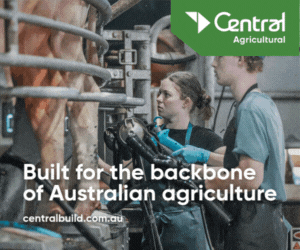1MG FlippingBooks
Urban sprawl needs to managed for sustainable agriculture
Elizabeth Gracie

A new report from Primary Producers South Australia and South Australian mixed farmer James Stacey has called for better urban planning systems to walk the tightrope between a population and agriculture needs.
Urban sprawl, the tendency for cities to grow outwards into suburbs, can impact livelihoods as arable land is sacrificed to accommodate new homes.
Stacey’s research examines how agriculture would be able to continue existing in peri-urban zones. He says,“I was motivated to undertake this research after experiencing firsthand the pressures placed on productive agriculture land by urban developments.”
Stacey, who is a Nuffield Australia 2018 Scholar, travelled to 11 different countries to investigate how different jurisdictions are managing land use with growing populations.
After visiting China, New Zealand, Canada and the US and meeting with farmers he was able to assess where and how planning systems and laws had successfully maintained a strong agricultural sector in peri urban zones.
A good example of this is the Chinese land consolidation policy which sees the retainment of 85% of agricultural land as farmland whilst still encouraging urban development in the other 15%. However in an Australian context the rural population shift to urban areas would be unrealistic.
Stacey also found that there were cases where “managing increases in population density have been successful without eroding productive land around quickly expanding cities”.
Ultimately the Growing Pains report has highlighted the importance of proper land management and the potential impacts of urban sprawl on land designated for agricultural work.
“Better planning laws will not only offer land security and encourage producers to invest in their farming operations with confidence, but will also help us to better align the often competing interests of local councils, community expectations and environmental policies”, says Stacey.
NEWS

Prodoz, a Proudly Australian and family-owned agribusiness, based in Melbourne, is strengthening its positions as national/international leader in advanced crop – science solutions through a growing portfolio of global innovation partners and a distribution footprint supported by all major distributors - includes Nutrien Ag, Elders, Lindsay Rural and Independent Rural stores.

Trace minerals are required for optimal growth, reproduction, and immunity. Optimising trace mineral status relying solely on oral supplements across a herd may fail because of variation in individual intake and reduced absorption due to antagonism of other ration components and minerals. The use of injectable trace mineral supplements has been associated with positive reproductive outcomes including improved conception rate, increased odds of pregnancy and greater final in calf rate. A study conducted on 2,168 dairy cows, administered injectable trace minerals, four weeks prior to calving and again four weeks prior to the start of mating showed treated animals had a 3.3 per cent greater final in-calf rate, and a reduced time from start of mating to conception, compared to control animals 1 . The Importance of B12 Dr Carl Eden, Technical Services Veterinarian with Boehringer Ingelheim says “Vitamin B12 is sometimes referred to as a ‘super vitamin’ because it is only required in very small amounts but vital to many essential metabolic pathways. However, demand for B12 can vary considerably during the year and we see serum levels of B12 fall at critical times, such as the first few months after calving.” Vitamin B12 contains cobalt, so deficiency in cobalt can lead to deficiency in vitamin B12 because ruminants get most of their B12 as a byproduct of ruminal fermentation where the bacteria in their rumen assemble B12 from cobalt for use by the cow. Sub-optimal trace mineral and vitamin B12 status at calving, mating, and drying off has been shown to negatively impact growth, reproduction, and immunity. Using a trace mineral injectable containing vitamin B12 can improve trace mineral and vitamin B12 status at these critical times. Marks-Min with Vitamin B12 – The Evidence In the largest trace element study to date, Marks-Min Injectable Trace Mineral with Vitamin B12 demonstrated remarkable results when compared to a reference trace mineral injection. “Given the differences between Marks-Min and other products on the market, we wanted to generate a compelling data set to demonstrate how effective it was compared to the pioneer product. We entrusted this work to a third-party research company” says Dr Eden. “We chose farms that were at the top of their game from a reproductive perspective. We made sure that the farms had no evidence of trace element or vitamin B12 deficiencies or excess.” Across all outcomes of interest, Marks-Min demonstrated clear non-inferiority when compared to the reference product. Outcomes measured included submission, pregnancy and conception rates, and six week in-calf rate. Marks-Min demonstrated it is highly suited as an alternative treatment to the reference product. Reference: 1. Hawkins, D., and B. V. S. Franklin. New Zealand Dairy Veterinarians Newsletter 24 (2007): 12-16 Company website: livestockfirst.com.au Company email address: CustomerCare.Australia@boehringer-ingelheim.com Company video: https://vimeo.com/1138807630?fl=pl&fe=cm














